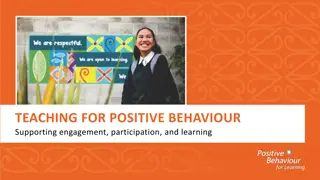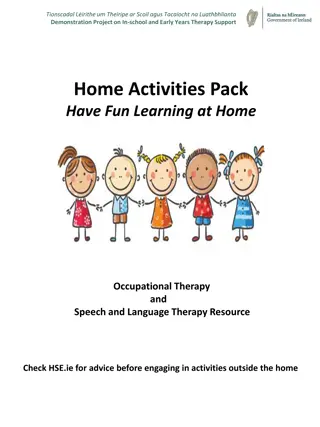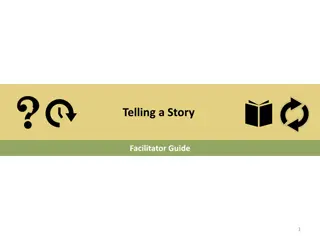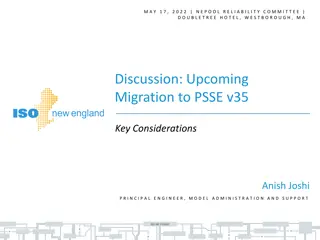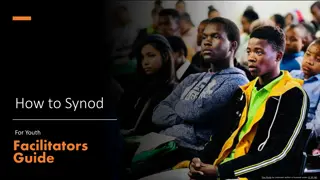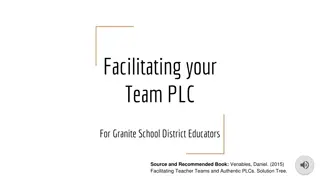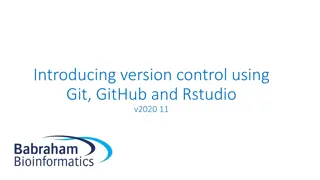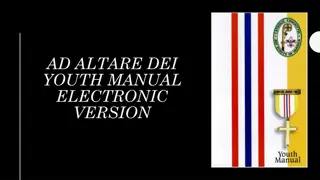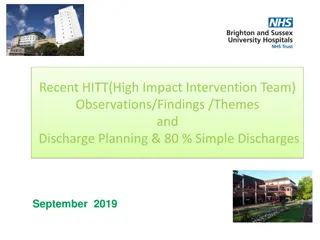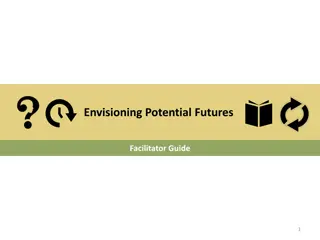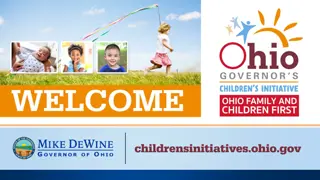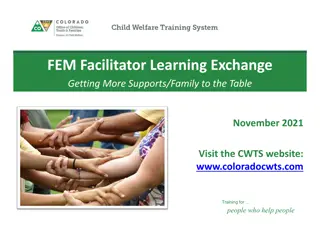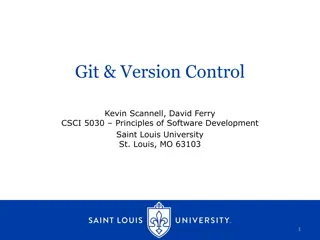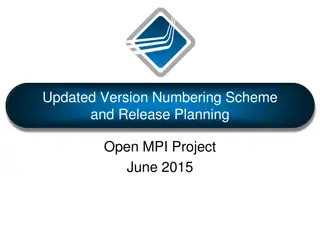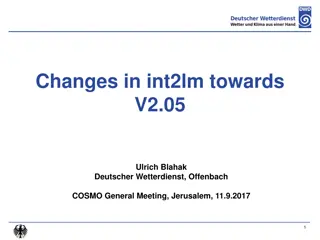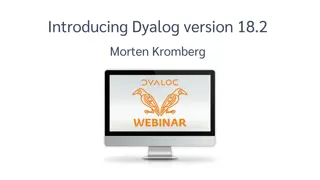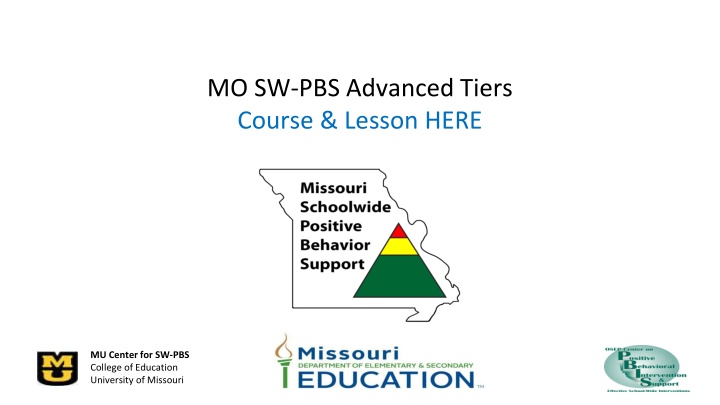
Methods to Monitor Staff Encouragement Strategies with Students
This lesson delves into the significance of monitoring staff's use of encouragement strategies when establishing a schoolwide encouragement system. Discover the importance of tracking Positive Specific Feedback to ensure adherence and effectiveness in promoting a positive environment for students.
Uploaded on | 4 Views
Download Presentation

Please find below an Image/Link to download the presentation.
The content on the website is provided AS IS for your information and personal use only. It may not be sold, licensed, or shared on other websites without obtaining consent from the author. If you encounter any issues during the download, it is possible that the publisher has removed the file from their server.
You are allowed to download the files provided on this website for personal or commercial use, subject to the condition that they are used lawfully. All files are the property of their respective owners.
The content on the website is provided AS IS for your information and personal use only. It may not be sold, licensed, or shared on other websites without obtaining consent from the author.
E N D
Presentation Transcript
MO SW-PBS Advanced Tiers Course & Lesson HERE MU Center for SW-PBS College of Education University of Missouri
Developer Notes: Delete this Slide Use this slide deck to develop each lesson in the course. Yellow slides to be deleted by developer & / or Facilitator as appropriate. Salmon colored slides are slides that will be personalized by the presenter Incorporate at least one activity for every 10 minutes of instruction LESS is more in terms of words on a slide Use IMAGES and then have notes to describe the concept Format a screenshot of a handout to look like a page on a desk and say pull out handout X vs expecting people to be able to read HO content. If walking through how to use the handout step by step use screen captures to do this MO SW-PBS
Facilitator Notes: Delete This Slide MO SW-PBS
Working Agreements Be Respectful Be an active listener open to new ideas Use notes for side bar conversations Be Responsible Be on time for sessions Silence cell phones reply appropriately Be a Problem Solver Follow the decision making process Work toward consensus and support decisions of the group MO SW-PBS
Attention Signal MO SW-PBS
Introductions MO SW-PBS
Handouts T1C5L5 HO 1 Frequency and Type of Student Interactions HOAP Action Plan HOAPC Tier 1 Action Plan Checklist HOAC Tier 1 Artifact Checklist MO SW-PBS
Lesson Description This lesson describes the importance of having methods to monitor staff s use of encouragement strategies with students when developing a schoolwide encouragement system. MO SW-PBS
Lesson Outcomes At the end of this session, you will be able to MO SW-PBS
Rationale Monitoring the use of Positive Specific Feedback supports the fidelity of implementation of this practice Monitoring the use of Positive Specific Feedback also determines if the rate of positive specific feedback students are earning is optimal for the environment you desire The goal is always to maintain an average 4 to 1 ratio of positive responses to correction. MO SW-PBS
Reflective Questions Thinking back on your responses to your students' behaviors, do you... Find yourself giving a higher rate of corrective feedback than positive specific feedback? Find that you provide an equal amount of corrective and behavior contingent positive feedback? Find that you provide more positive specific feedback than corrective? Find that you provide positive specific feedback and corrective feedback at a ratio at or greater than 4:1? MO SW-PBS
Pre-Requisites For additional information, see the MO SW-PBS Tier 1 Workbook Course 5 of the Tier 1 Implementation Guide, Encouraging Expected Behavior and Effective Teaching and Learning Practice # 3 Encourage Use of Expected Behavior in MO SW-PBS Handbook MO SW-PBS
Missouri Teacher Standards Addressed 2.1: Cognitive, social, emotional and physical development 2.6: Language, culture, family and knowledge of community 3.1: Implementation of curriculum standards 5.1: Classroom management, motivation and engagement 5.2: Managing time, space, transitions and activities 5.3: Classroom, school and community culture 6.1: Verbal and nonverbal communication 6.2: Sensitivity to culture, gender, intellectual and physical differences 8.1: Self-assessment and improvement 8.2: Professional learning MO SW-PBS
Discussion Discuss how might you monitor each of these How do you and / or we currently use these methods to monitor the use of positive specific feedback to students? MO SW-PBS
Key Terms Effective positive specific feedback: 1) specifically describes the behavior, 2) provides reasons or rationales, and 3) can include a positive consequence. MO SW-PBS
MONITORING USE OF SCHOOLWIDE TANGIBLES What are your school s current methods for utilizing tangibles such as tickets to increase rates of positive specific feedback? Are student and staff names on the tickets? Can classroom teachers submit those tickets weekly to a designated person that has the time and commitment to create a school-wide report and visual graph of the use of those tickets earned per week or month? How might a visual graph support school-wide expectations of how staff are using positive specific feedback to increase expected behaviors? MO SW-PBS
Using Self Monitoring Strategies to Monitor the Use of Positive Specific Feedback in Practice Ways to Self monitor and collect the rate of responses to positive student behavior compared to corrections: Move pennies or paperclips from one pocket to another when expected student behavior is recognized. Tear an index card to collect the number of positive responses and corrections. Make tally marks on a piece of tape on your arm or sticky note on a clipboard. Move popsicle sticks into cans. MO SW-PBS
Using Observation to Monitor the Use of Positive Specific Feedback in Action Simple, non-evaluative observations (peer-to-peer) to monitor staff use of positive specific feedback Create a School-wide Schedule for peer-to-peer observations Staff identify a colleague to partner with to complete a short (5-10 minute) observation to look for positive specific feedback Identify a method of observation (e.g., post-it to tally the number of positive specific feedback responses to leave with colleague or an electronic form with 1- 2 simple prompts such as Date, Number of Positive Specific Feedback provided to students, Number of Positive Consequences provided to students) MO SW-PBS
Discussion Discuss the information about monitoring the use of positive specific feedback. How might you monitor and ensure staff are using high rates of encouragement with students across the school? With your team review HO#5 Frequency and Type of Student Interactions. Discuss how might you use this handout to gather data to inform coaching with staff? Also discuss who will see the results and what will be done with the data. MO SW-PBS
Monitoring the Use of Positive Specific Feedback in Action MO SW-PBS
Progress Monitoring MO SW-PBS
Progress Monitoring MO SW-PBS
Progress Monitoring MO SW-PBS
Next Steps Next steps include: Decide upon simple action steps your team will take to give staff practice providing specific feedback and what steps your team will make to encourage staff use of a 4:1 ratio. Update your action plan using the Tier 1 Action Plan template and the Tier 1 Action Planning Checklist. Use the Tier 1 Artifacts Rubric to assess the quality of the resources your team develops. Use the results of the PBIS Self-Assessment Survey (SAS) to gain perspective from all staff, and results from the PBIS Tiered Fidelity Inventory (TFI) to gain perspective from your building leadership team. Additional information can be found in the SW-PBS Handbook and Tier 1 Implementation Guide. MO SW-PBS
References Sprick, R., Knight, J., Reinke, W., & McHale, T. (2006). Coaching classroom management: Strategies and tools for administrators and coaches. Eugene, OR: Pacific Northwest. MO SW-PBS
Contact Information Check Out MO SW-PBS on Social Media: Facilitator Contact Information: pbismissouri.org List HERE facebook.com/moswpbs instagram.com/moswpbs/ MO SW-PBS

